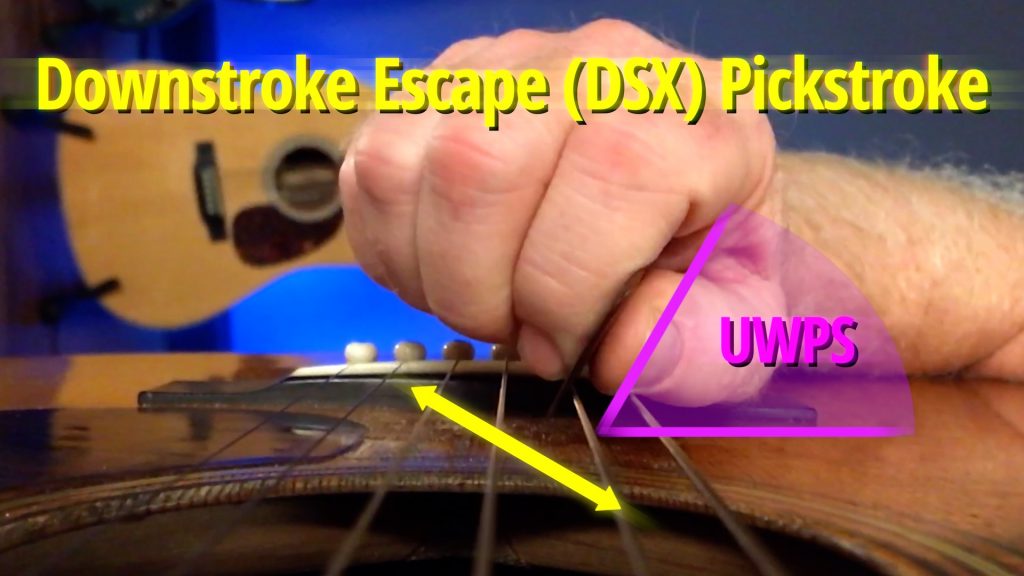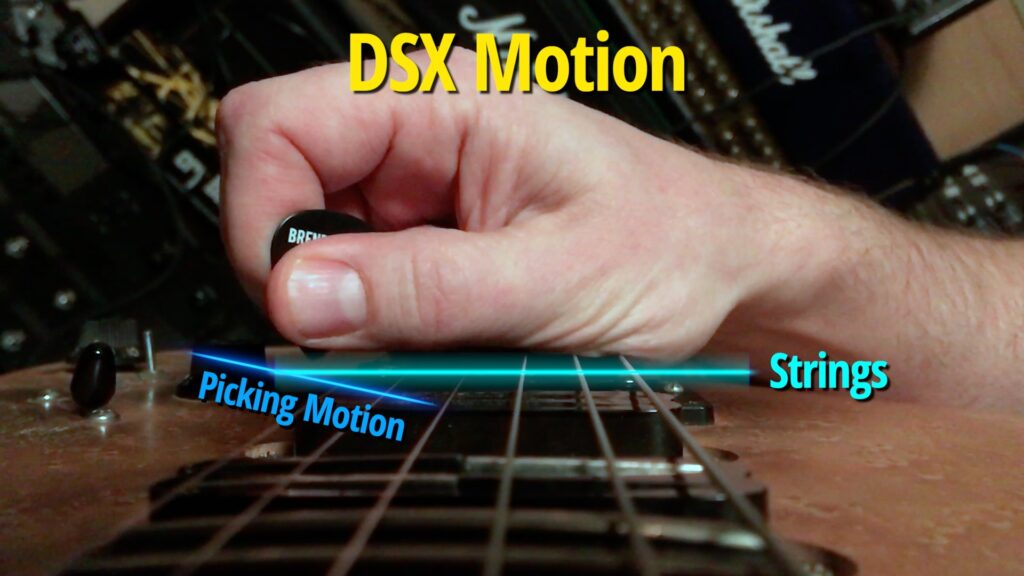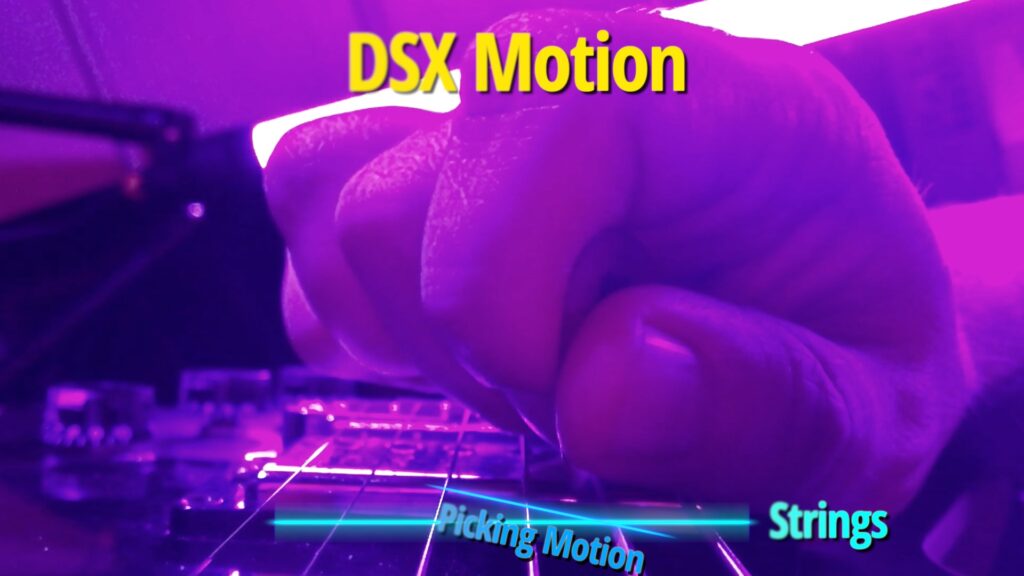Upward Pickslanting
Upward pickslanting, or UWPS, is a picking orientation where the pick slants toward the ceiling. Its primary use is to ensure smooth pick attack during DSX motion.
In a DSX motion, downstrokes are the escaped pickstrokes, rising up into the escape zone above the plane of the strings. This motion type is the mechanical inverse of USX, so the pick orientation we need to restore our 90-degree angle of attack is now an upward pickslant, or UWPS:

In bluegrass master David Grier’s high-speed DSX picking motion, he uses a pronated setup in which the forearm is rotated toward the bass strings. This has the effect of rotating the hand and the pick along with it, producing the very visible upward pickslant we’re seeing here.
Paired with David’s choice of deviation wrist motion, this creates about a 30-degree escape angle, approximately the most vertical escape — and the most visible pickslant — we typically see among DSX techniques. It looks very similar to sweep master Frank Gambale’s DSX technique when he uses his pronated form, and the two pickslants appear remarkably similar when lined up alongside each other:

Other DSX approaches generate a more shallow escape. One of the most common is the type of wrist motion used by Brendon Small, based on a lightly supinated forearm instead of a pronated one:

Brendon’s wrist technique produces an escape angle of only about 15 degrees. As such, you’ll notice that the slanted picking orientation is much less obvious, and might not be noticeable at all without the “down the strings” camera angle we’re using here.
Another common DSX motion with shallow escape is elbow motion, a technique Brendon also uses:

When the elbow joint is used for alternate picking, it produces a DSX motion with an escape angle of approximately 15 degrees, similar to Brendon’s wrist-based DSX technique. The matching 15-degree pickslant is also subtle compared to the more visually obvious pickslant of David Grier’s DSX technique.
This tendency toward shallow escape is not strictly linked to DSX motion itself, but instead a function of the specific body position and joint motion that we’re seeing here. But because these happen to be popular choices, some of the more famous DSX techniques in history, like those of John McLaughlin and Al Di Meola, may not appear upon casual observation to use pickslanting, even though they do.
Pickslanting And Edge Picking
Another reason why “looking for the slant” is not a reliable indicator of what kind of picking motion a player is using has to do with edge picking.
When you introduce edge picking, some part of the pick’s edge strikes the string, promoting sliding. This allows you to use a pickslant that may not precisely match the angle of your motion. A great example of this is Andy Wood’s DSX technique, which sometimes doesn’t appear to use a pickslant at all:

Andy’s style of DSX wrist motion is similar to Brendon Small’s in that it generates a shallow escape angle relative to the strings. But it’s still an escape motion, and still angled, so we’d expect to see some amount of upward pickslanting here. The reason we don’t is that Andy, like Brendon, uses a high degree of edge picking. This lets him slide over the strings in both directions, avoiding the garage spikes problem, even though his angle of attack isn’t quite symmetrical.
The combination of edge picking and relatively little pickslanting is common in DSX motion, but it’s not unique to it. The same relationship combination also works for USX motion, where a high degree of edge picking can still promote smooth pick attack even when the motion is angled:

In this Mike Stern-style approach, the tapered shape of the Jazz III pick, combined with a high degree of edge picking, promotes sufficient sliding and smooth-sounding attack. Once again, the key to this relationship is shallow escape. Andy’s technique, Brendon’s technique, and Mike’s technique can all use less of a pickslant because the motion is almost parallel to begin with. So all it takes is a little edge picking to smooth out the attack.
So if you’re looking for a way to identify picking techniques from more than a few feet away, the best way is not to look for the pickslant, but the type of picking motion itself. The general form of a common DSX approach like elbow motion is easy to recognize, and is a much more reliable indicator of the type of escape motion a player is using than trying to to judge the appearance of a pickslant which is very slight or possibly even not there.